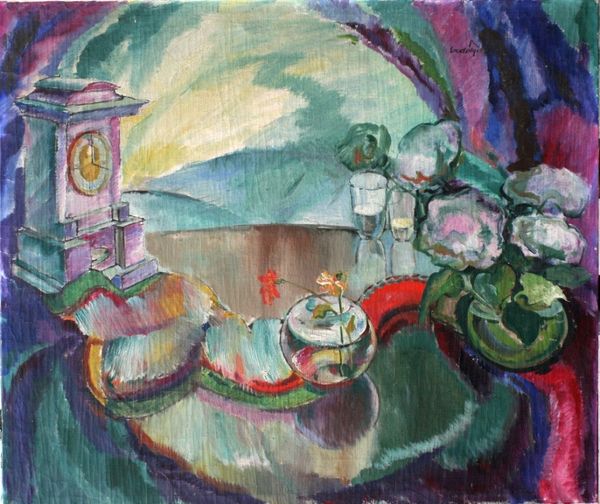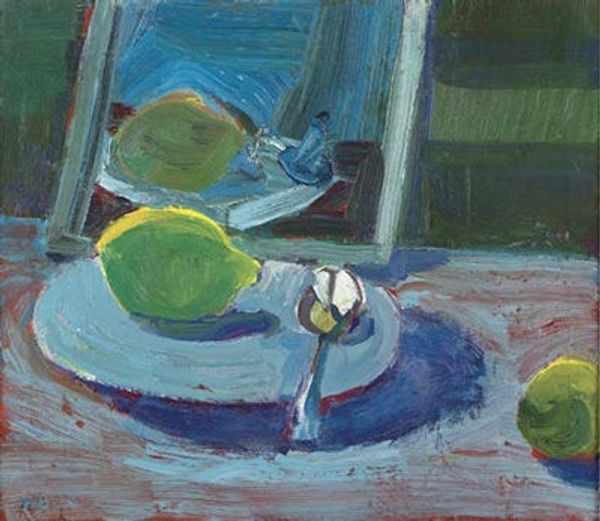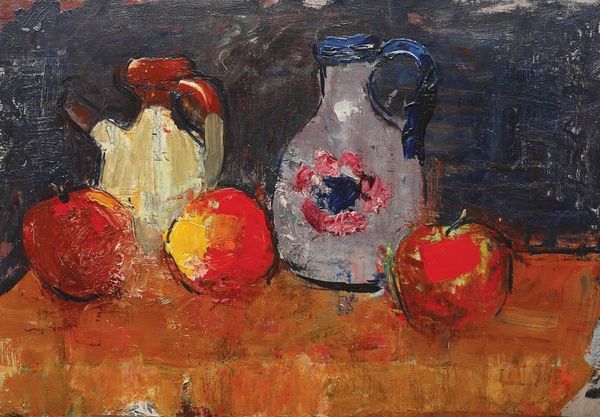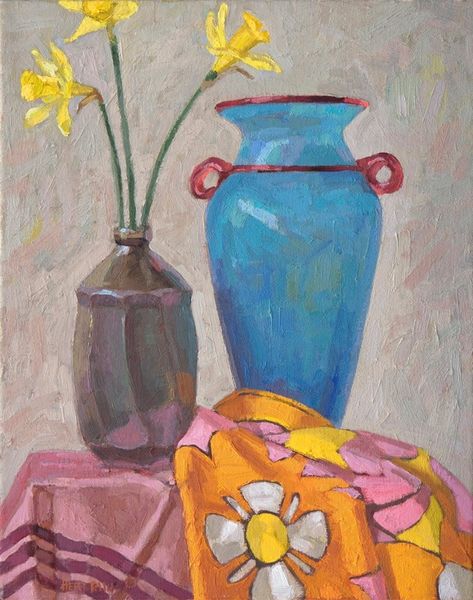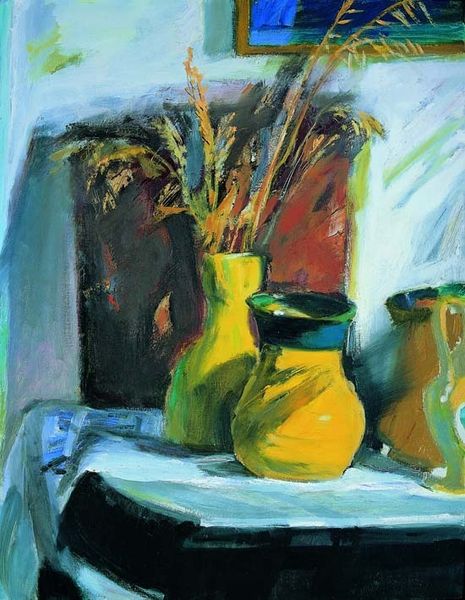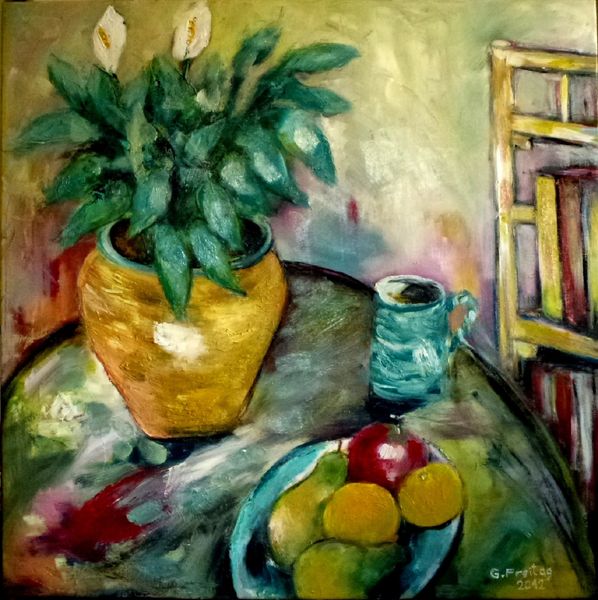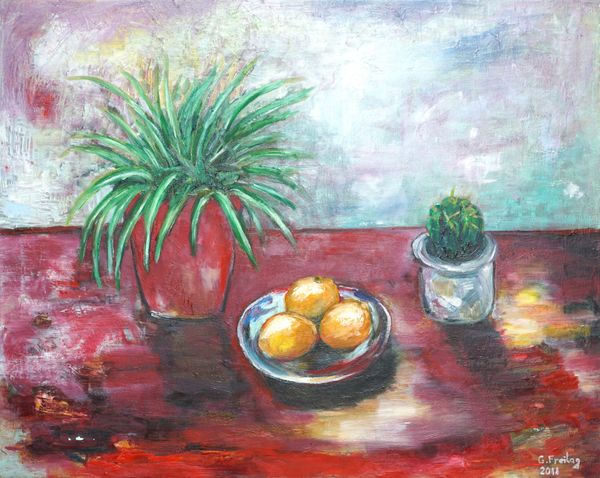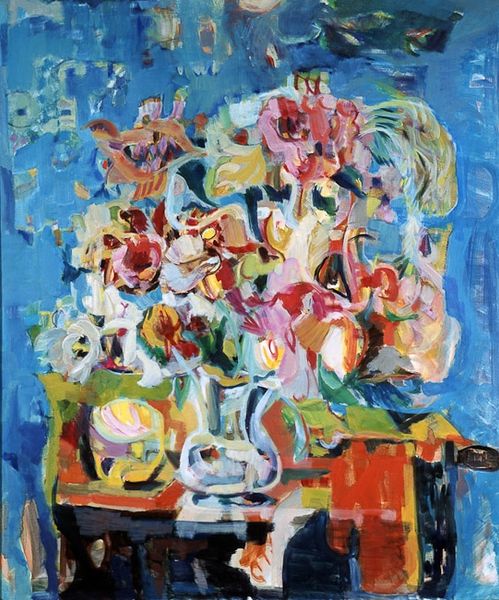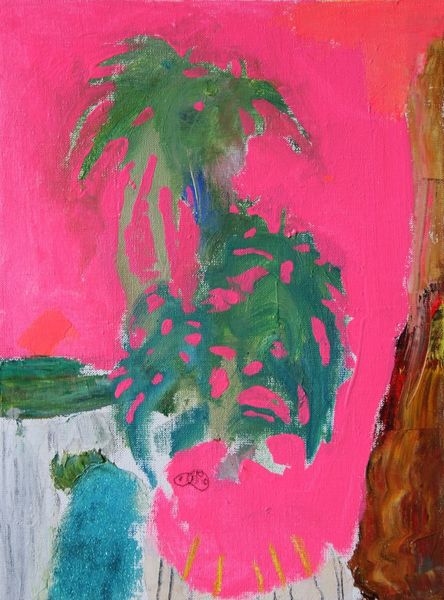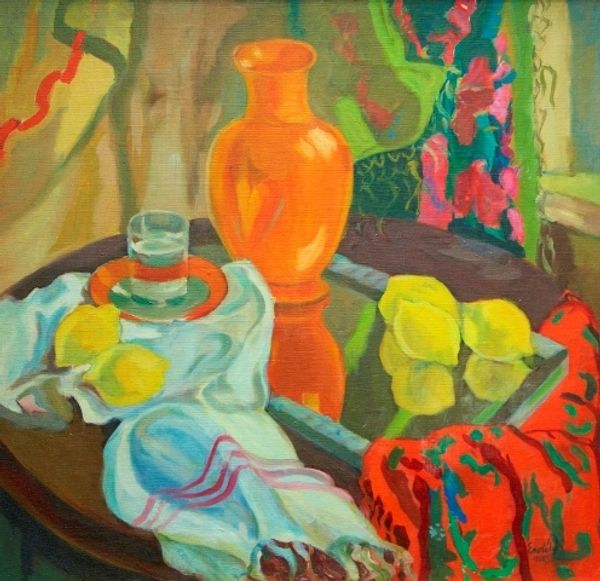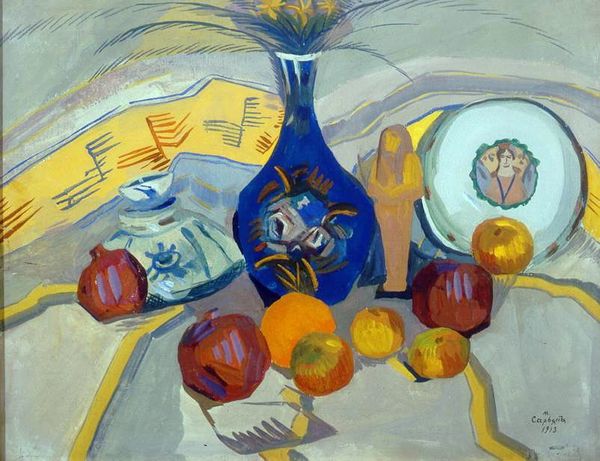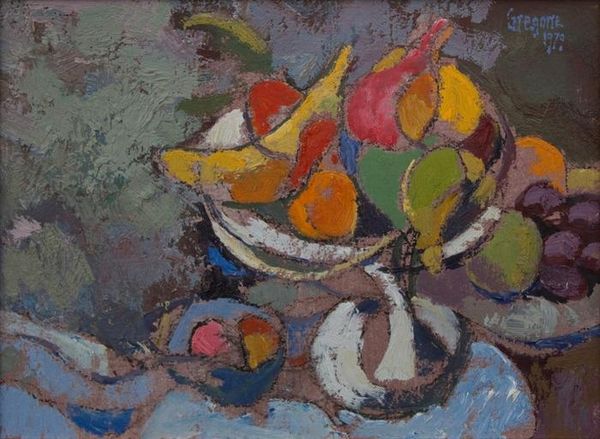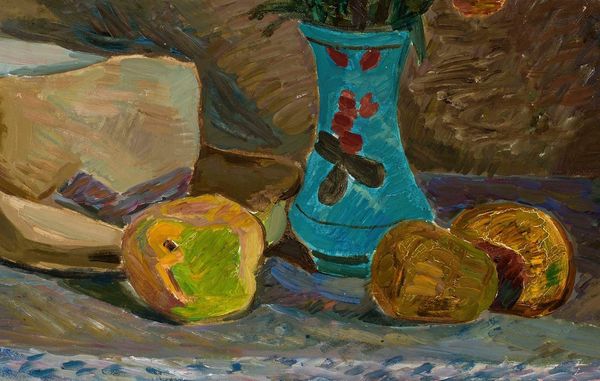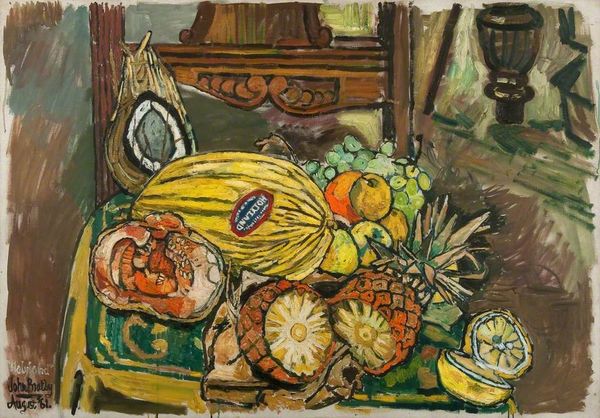
oil-paint
#
fauvism
#
fauvism
#
oil-paint
#
landscape
#
oil painting
#
naive art
Copyright: Public domain
Editor: So, this painting, "Flowers and Fruit" by Harry Phelan Gibb, seems to be oil on canvas. The colors are so bold! I find the red flowers and the blue background particularly striking, but I'm not sure how to interpret it. What do you see in this piece? Curator: The vibrancy of those colors immediately grabs the eye, doesn’t it? Fauvism sought to liberate color from its descriptive function. Here, Gibb uses red, not necessarily to represent the exact color of the flowers, but for its symbolic power, perhaps evoking passion or energy. What do you make of the placement of these bright red flowers against that intense backdrop of blues and greens? Editor: Well, it does feel like the flowers are really jumping out, becoming the immediate focal point. It's less about accurately depicting what's in front of you and more about how it *feels*. The lemons at the base almost feel secondary in their presence. Curator: Exactly! And notice the naivete in the execution – forms simplified, perspective skewed. It’s reminiscent of folk art traditions. In a sense, this isn't merely a still life; it's an exploration of how our emotions and cultural background shape what we see. Do you think the arrangement—the contrast between the cultivated flowers and natural fruit—contributes to this interpretation? Editor: That’s a good point. It's like he's placing elements from different worlds, or maybe stages of life, beside each other. I hadn't thought about that. The roughness of the pot and tablecloth compared with the smoother, simplified lemons reinforces the feeling. Curator: Precisely. And consider that within cultural memory, flowers have long held symbolic weight representing growth, death, renewal, while fruit speaks to abundance and the ephemeral nature of pleasure. Gibbs uses these existing visual languages. It pushes the painting past just depicting the objects themselves. It encourages us to actively decode this emotional space. Editor: I see that. So, in a way, it's an interplay between the raw emotion of the Fauvist colors and these underlying layers of historical symbolism? Curator: Precisely! This exploration really underscores how imagery has staying power and can continue to elicit visceral emotional responses across different points in time. Editor: That definitely gives me a new way of understanding this work. Thanks!
Comments
No comments
Be the first to comment and join the conversation on the ultimate creative platform.
